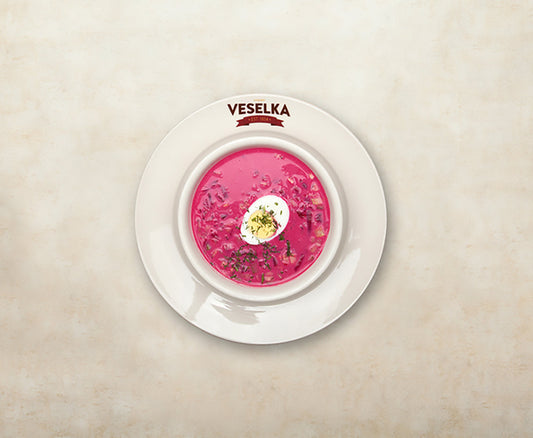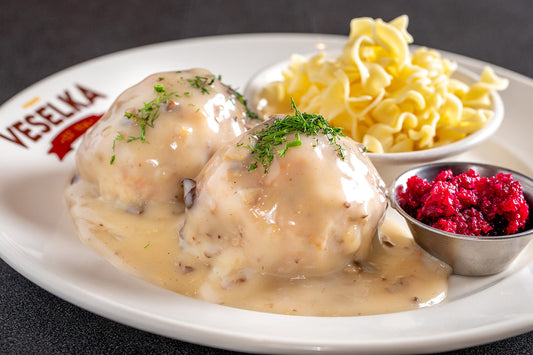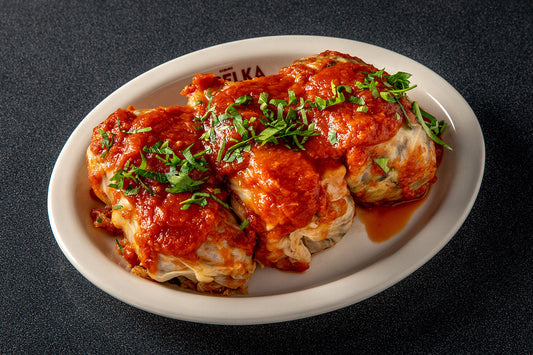Pierogi, those delightful little dumplings filled with savory or sweet fillings, are a favorite in many households. But when it comes to reheating leftovers, you might wonder how to bring back that freshly cooked taste and texture. From boiling to pan-frying, we explore diverse methods for how to reheat pierogi, suiting varied tastes and preferences. Our goal is to simplify the reheating process, making sure your pierogi are as delightful as when you first enjoyed them.
Reheat Pierogi by Boiling
Boiling is a traditional and effective way to reheat pierogi, especially if you want to retain their original texture and flavor. This method works best for pierogi that have been previously cooked or frozen. Here's a simple guide on how to reheat pierogi by boiling:
- Prepare Your Pot: Fill a large stockpot three-quarters full with water, add a hefty pinch of salt for flavor (as if you were cooking pasta), and bring it to a rolling boil.
- Introduce the Pierogi: Using a slotted spoon or skimmer, gently lower three or four pierogi into the boiling water. This ensures they heat evenly without crowding the pot.
- Time the Boil: Allow the pierogi to swim in the boiling water until they float to the surface and then boil for an additional 90 seconds.
- Remove and Drain: With the same slotted spoon, fish out the pierogi, letting the water drip off to avoid any sogginess. Then, place them onto a serving dish.
- Repeat: Continue with the remaining pierogi, making sure the water is boiling each time you add a new batch.
When all pierogi are reheated:
- Garnish and Serve: Now that they are hot and ready, sprinkle them with the golden sautéed onions you've prepared. Add a generous dollop of sour cream to each one to taste.
Boiling pierogi is ideal for keeping them soft and tender. It's an effective method to ensure your dumplings are as enjoyable as when they're freshly prepared.
Reheat Pierogi by Pan Frying Method
While boiling is a classic approach, pan frying is another popular method that adds a delightful texture to your pierogi. Here’s how to do it:
- Heat Your Pan: Start by heating a frying pan on medium heat. A non-stick pan is handy, but any regular pan will do with a little oil or butter.
- Prepare the Pierogi: In a frying pan, simply add a bit of butter or oil before arranging the pierogi in a single layer, making sure they don’t overlap.
- Pan Fry the Pierogi: In the pan, fry the pierogi for 3-4 minutes on each side until they turn a golden brown and get crispy. Place them in the basket in a single layer without overcrowding.
- Serve Immediately: Once your pierogi are crispy to your preference, take them out of the pan. They taste best when served hot and can be complemented with toppings or dips such as sour cream, sautéed onions, or apple sauce.
Pan frying is an excellent choice for those who enjoy a bit of a crunch in their pierogi. It’s a quick and easy way to add texture while also ensuring they're heated thoroughly.
Additional Tips When Reheating Pierogi
Reheating pierogi so that they retain their delicious flavor and texture requires a bit more than just choosing the right method. Here are some additional tips to ensure your reheated pierogi are just as enjoyable as when they were freshly made:
- Avoid Overcrowding: Whether you're boiling or pan-frying, make sure not to overcrowd the pierogi. Overcrowding can lead to uneven heating and may cause them to stick together or break apart.
- Defrost First If Frozen: If your pierogi are frozen, it's often best to defrost them before reheating. This helps them heat up evenly and prevents a cold center.
- Use Leftover Water or Stock: When boiling pierogi, consider using flavored liquid like vegetable or chicken stock for an added flavor boost. Even leftover cooking water from the original boiling can be reused to introduce some of the original flavors back into the pierogi.
- Prevent Drying Out: To keep your pierogi from drying out, brush them lightly with some butter or oil. This keeps them moist and adds a bit of flavor.
- Consider the Fillings: Different fillings may require different reheating times. For instance, pierogi filled with cheese or fruit may need less time compared to those filled with meat or potatoes.
- Rest After Cooking: After reheating, let the pierogi rest for a minute or two. This brief rest period allows the fillings to settle and the flavors to meld.
- Experiment with Toppings: Reheated pierogi can be added up with various toppings. Classic options include sour cream, fried onions, or apple sauce. For a more gourmet touch, consider herbs, crumbled bacon, or even a sprinkle of cheese.
- Monitor the Heat: Pay close attention to the temperature, especially when using a pan. Adjusting the heat is key to prevent overcooking or burning.
These simple tips can make a big difference in bringing your pierogi back to its original taste. They're easy to follow and will help you serve up reheated pierogi that taste just as good as when they were fresh out of the kitchen.
Common Mistakes to Avoid When Reheating Pierogi
Reheating pierogi is generally simple, but a few common errors can significantly affect their quality. Here's what to avoid and how to correct these mistakes:
-
Using High Heat: This can cause the outside to burn while the inside remains cold.
Solution: Opt for a lower, more moderate temperature for even heating. This might take a bit longer, but it ensures your pierogi are heated through properly.
-
Not Turning or Stirring Pierogi: Forgetting to turn or stir pierogi during reheating can result in uneven cooking.
Solution: Make sure to turn or stir them halfway through the reheating process for uniform heat distribution and browning.
-
Choosing the Wrong Pan: The wrong pan can make pierogi stick and tear.
Solution: Opting for a non-stick pan is advisable when available. It significantly aids in preventing sticking.
By steering clear of these common errors, you can ensure your reheated pierogi come out just right - warm, delicious, and with the perfect texture. A little attention and patience can truly elevate your pierogi experience to sheer delight!
Perfectly Reheated Pierogi
Perfecting the steps of how to reheat pierogi gives you the ease to enjoy these delightful treats at home. Each method, be it boiling or pan-frying, preserves their deliciousness.
- Find out How To Store Pierogi The Right Way
For an authentic pierogi experience that complements your home reheating skills, visit Veselka, a beloved Ukrainian restaurant. Their expertise in traditional pierogi making is a culinary journey worth exploring. Whether at home or Veselka, the secret to great pierogi lies in the care and technique used in preparation and reheating.





